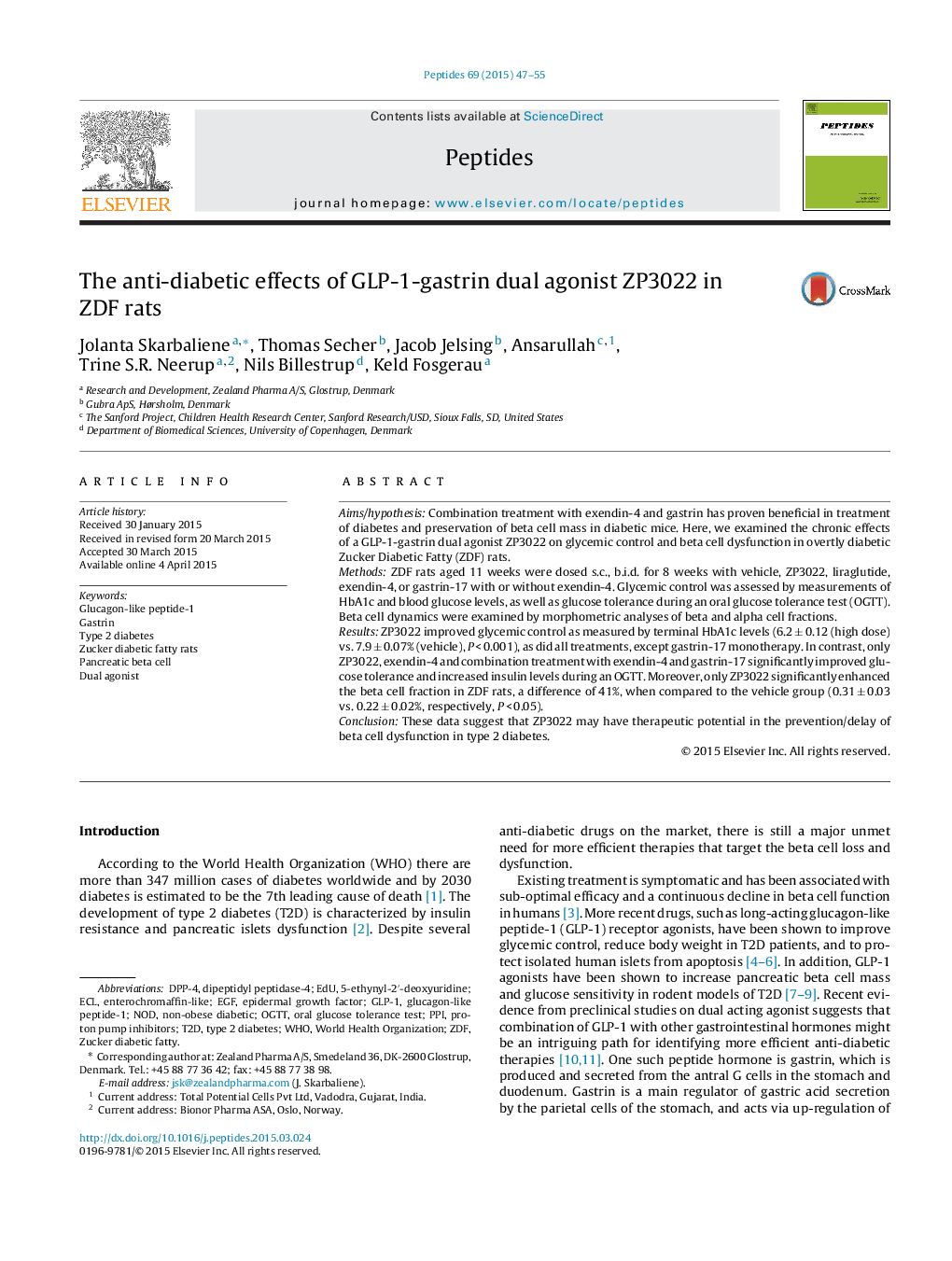| Article ID | Journal | Published Year | Pages | File Type |
|---|---|---|---|---|
| 2005931 | Peptides | 2015 | 9 Pages |
•We tested the anti-diabetic effect of GLP-1-gastrin dual agonist ZP3022 in ZDF rats.•ZP3022 improves glycemic control and glucose tolerance.•ZP3022 prevents the pathological decline in beta cell fraction.•ZP3022 offers an even greater protection on beta fraction than GLP-1 agonists alone.
Aims/hypothesisCombination treatment with exendin-4 and gastrin has proven beneficial in treatment of diabetes and preservation of beta cell mass in diabetic mice. Here, we examined the chronic effects of a GLP-1-gastrin dual agonist ZP3022 on glycemic control and beta cell dysfunction in overtly diabetic Zucker Diabetic Fatty (ZDF) rats.MethodsZDF rats aged 11 weeks were dosed s.c., b.i.d. for 8 weeks with vehicle, ZP3022, liraglutide, exendin-4, or gastrin-17 with or without exendin-4. Glycemic control was assessed by measurements of HbA1c and blood glucose levels, as well as glucose tolerance during an oral glucose tolerance test (OGTT). Beta cell dynamics were examined by morphometric analyses of beta and alpha cell fractions.ResultsZP3022 improved glycemic control as measured by terminal HbA1c levels (6.2 ± 0.12 (high dose) vs. 7.9 ± 0.07% (vehicle), P < 0.001), as did all treatments, except gastrin-17 monotherapy. In contrast, only ZP3022, exendin-4 and combination treatment with exendin-4 and gastrin-17 significantly improved glucose tolerance and increased insulin levels during an OGTT. Moreover, only ZP3022 significantly enhanced the beta cell fraction in ZDF rats, a difference of 41%, when compared to the vehicle group (0.31 ± 0.03 vs. 0.22 ± 0.02%, respectively, P < 0.05).ConclusionThese data suggest that ZP3022 may have therapeutic potential in the prevention/delay of beta cell dysfunction in type 2 diabetes.
